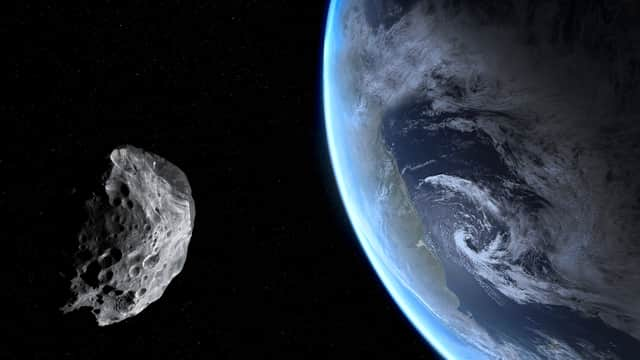A 'stadium-sized' asteroid is heading for Earth - but there’s no need to panic


NASA has revealed that a “stadium-sized” asteroid will shoot past earth later today (Mon 22 Feb).
The asteroid, named 2020 XU6, measures 213 metres in diameter, making it twice as tall as London’s Big Ben, and two and half times the size of the Statue of Liberty in New York City.
A safe flyby
Advertisement
Hide AdAdvertisement
Hide AdThose concerned about the asteroid crashing into earth can have their worries eased, as experts from the US space agency revealed 2020 XU6 will fly past at more than 10 times the distance between the Earth and the Moon.
The distance between Earth and its lunar satellite, known as a lunar distance (LD), measures in at more than 380,000 kilometres.
NASA has said that asteroid 2020 XU6 will pass Earth at 10.7 LDs, which is still close enough for the space rock to be classified as a ‘near Earth object’. Near Earth objects are defined as any small solar system body which comes within 1.3 astronomical units of Earth.
The 2020 XU6 asteroid will be travelling at a speed of 8.4 kilometres per second or 30,240 kilometers an hour. Given that the circumference of the Earth is 40,075 kilometers, it would take the asteroid a little over an hour to complete a lap of the entire planet.
Advertisement
Hide AdAdvertisement
Hide AdThe asteroid has also been classified as ‘potentially hazardous’. However, this does not mean the object poses an imminent threat to the planet.
NASA explained: “Potentially Hazardous Asteroids (PHAs) are currently defined based on parameters that measure the asteroid’s potential to make threatening close approaches to the Earth.
“Specifically, all asteroids with a minimum orbit intersection distance (MOID) of 0.05 au or less are considered PHAs.”
Occasionally, the orbital paths of asteroids are influenced by the gravitational tug of planets, which cause their paths to alter. Scientists believe stray asteroids or fragments from earlier collisions have slammed into Earth in the past, playing a major role in the evolution of our planet.